Face Off With Wild Pigs
Working on golf courses provided me with many opportunities to interact with our native wildlife. Now, most of my interactions were welcome – roadrunners, jackrabbits, even baby raccoons. Some encounters were unexpected – snakes, tarantulas and coyotes. But there was one animal with which I waged a constant battle…the Javelina, also know as the Wild Pig.
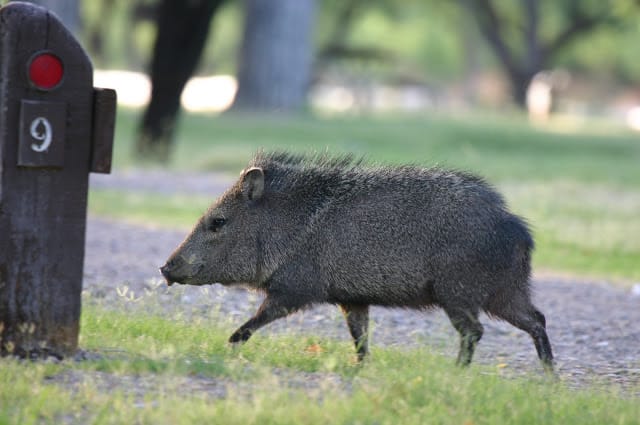
Javelina (Collard Peccary) Photo by Wing-Chi Poon
Now Javelina are not actually pigs, but are pig-like mammals that are native to the Southwestern region of the United States, ranging southwards into Central and South America.
Okay, first of all, you can smell them before you can see them. There is no polite way to state this – they stink. They travel in small herds and love to eat just about anything. They can eat cactus out in the desert, but will ignore that in exchange for what is growing in your garden.
My personal battle with javelina was due to the fact that two of the golf courses I worked at had 36 tee boxes and each were planted with flowers. In the summer, I would plant Lantana, which was beautiful and the Javelina did not touch. But, in the winter, they loved to eat whatever type of annual flower I planted, leaving torn up plants and dirt as proof that they had been there.

Purple Petunias planted at the tee box.
Believe it or not, Petunias, Pansies and Geraniums are listed on the Javelina Resistant Plants list. But, evidently, the Javelina did not read this list because they happily ate all of mine.
Now, I knew I had to do something besides replacing annuals up to three times a week. The members of the golf courses wanted flowers and I was tired of making endless trips to the nursery in order to pick up replacement plants and it was eating into my budget. So, I did some research.

Pink Petunias with Eremophila ‘Valentine’ in the background.
Some people swore that putting shavings of “Irish Spring” soap would keep them away. Others said that human hair would do the trick. I honestly did not try any of these because I had seen them fail before. But, there are some products that have had some limited success. The first are coyote urine products that seems to help keep them away, (I didn’t want to try this one for obvious reasons). The second is Liquid Fence, which must applied frequently and the third is Dr. T’s Squirrel Repellent.
I used Dr. T’s Squirrel Repellent with some success. It did not eliminate the problem, but it did help decrease the amount of flowers being eaten by the Javelina.
*I did discover that the favorite thing the they would eat, was citrus fruit. So in the winter, when citrus fruit was plentiful on the trees, the Javelina would mostly ignore my flowers. In the summer, they would eat the seedpods from the Mesquite trees.
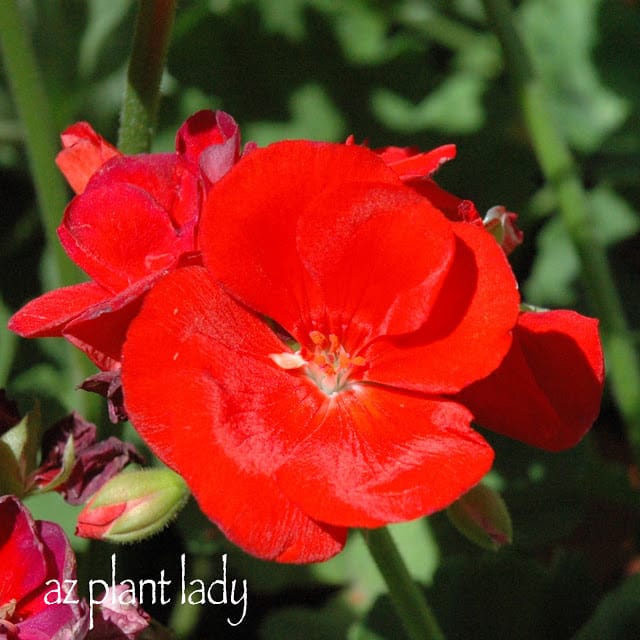
Geranium Flower
There are plants that Javelina are less likely to eat, but if they are hungry enough, they will eat anything. For years, they never ate the Geraniums I had planted on the golf course. But, one year, they came in and ate them all. So, no plant is completely resistant to them. The following link will send you to a list of plants that are somewhat resistant to Javelina – be sure to cross out Petunia, Pansy and Geraniums off of the list ;-).
*Annuals that are usually resistant to Javelina include Euryops Daisy, Bacoba, Snapdragons as well as Fern Leaf Lavender.
So the outcome was that I did win some battles, but the Javelina ultimately won the war….
Thankfully, the planters were removed during a golf course renovation and now perennials are now planted in their place, which are ignored by the Javelina. Unfortunately, this occurred after I had left….

 Noelle Johnson, aka, 'AZ Plant Lady' is a author, horticulturist, and landscape consultant who helps people learn how to create, grow, and maintain beautiful desert gardens that thrive in a hot, dry climate. She does this through her consulting services, her online class Desert Gardening 101, and her monthly membership club, Through the Garden Gate. As she likes to tell desert-dwellers, "Gardening in the desert isn't hard, but it is different."
Noelle Johnson, aka, 'AZ Plant Lady' is a author, horticulturist, and landscape consultant who helps people learn how to create, grow, and maintain beautiful desert gardens that thrive in a hot, dry climate. She does this through her consulting services, her online class Desert Gardening 101, and her monthly membership club, Through the Garden Gate. As she likes to tell desert-dwellers, "Gardening in the desert isn't hard, but it is different."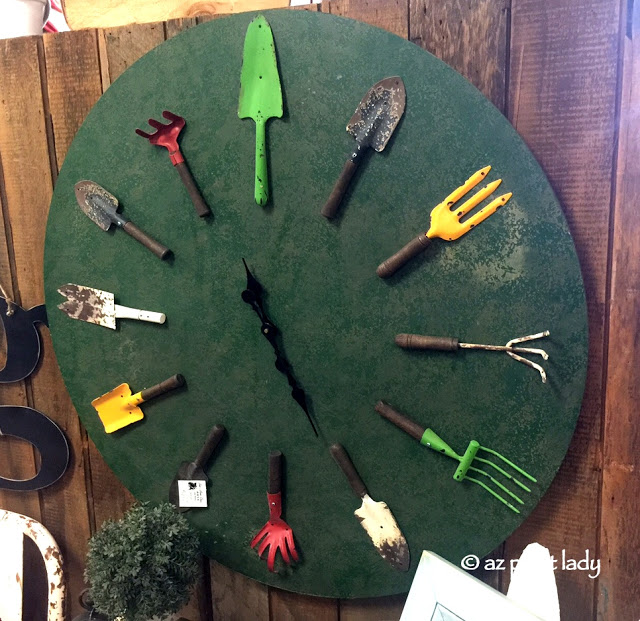
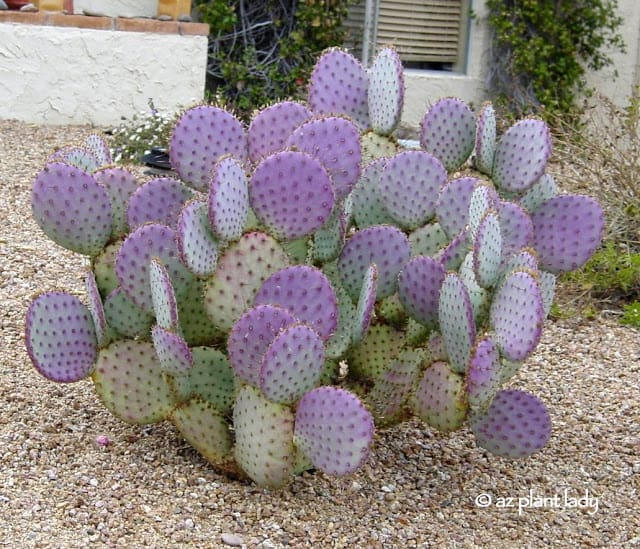
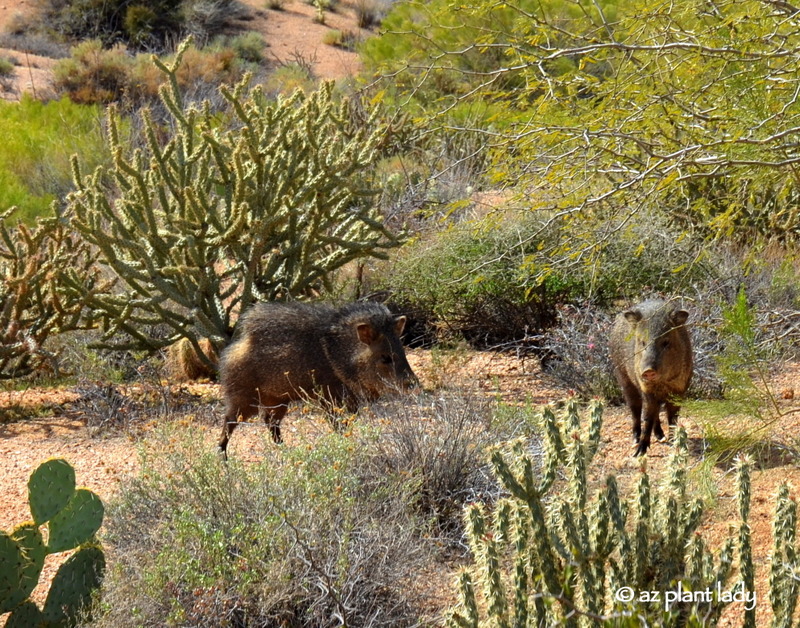









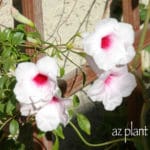
Wow and folks complain about deer! At least deer don't smell! The photo of the pig is kinda cute, though. Bacon anyone?
Because of there size, I'm sure that the javolina are much more distructive than my voles. The voles are enough of a problem, though, especially in winter and early spring. I've tried liquid fence and real fences. I try traps and dig up there burrows. I'll try the squirel product you mentioned.
I guess if we want to live among nature we have to learn to live with nature.
Great post, what a determined little critter. Quite a battle to keep flowering annuals around, it really is too bad the changes were made after you left.
Hi Noelle! What a great photo of the javelina! My aunt and uncle in Tucson would talk about these… and my uncle used to hunt them. He sent me a little photo once. I used it in the classroom when we read "The Three Little Javelinas" (I had/have a collection of 3 Little Pig books! ha.
I've never even heard of a javelina before! But our Roadrunners eat flowers, too. I spent one summer waging war with one who ate every flower I planted in my client's porch container.
Do you know why they eat annuals but not perennials?
Ha! They probably replaced the planters after you left because no one could keep up with the javelina as well as you did! They are neat looking and sound as bad as our deer here in the southeast. Grrrr.
Noelle, My reaction to this was almost exactly the same as Christine's. The next time I'm thinking of complaining about deer, I'm going to remind myself, "It could be much worse; they could be javelina!" -Jean
We have an introduced European species of wild boar here in California. Reproductively prolific, and unbelievably destructive to native habitats. I must admit though, your native Javelina is rather adorable. It seems as gardeners we're always in the position of something trying to devour our efforts…whether it's gophers, bunnies, pigs, or deer…and some of us are unlucky enough to have all four! 🙁
Yikes! I'd never heard of a javolina. They do sound like pesky creatures and a bit…homely. I'm thinking Bambi munching on the sweet corn isn't so bad afterall.
They remind me of our scottish rabbits – they will eat anything especially in the winter and if they don't like the top growth they will dig up the plant and feast on the roots. If those planters had been higher would they still have been able to reach them?. Glad we don't have those here. Deer and rabbits and moles are enough to cope with here.
I didn't realise that Javelina were native to the States – I always think of them as being much further south.
Here, we now have an increasing number of wild boar in the British countryside – they have been released from farms by animal protectionists. Pity they didn't think of all the harm and damage they are doing to our native plants and wildlife.
Johnson
Argh! We had them in our Houston, The Woodlands actually, area. We saw them running in herds, right next to a very busy highway. They could move so fast, and looked so out of place in the devoloped area but would dig and eat nearly anything in the public plantings. Homes all had backyard fencing, but the front was open buffet. I thought they were scary! 🙂
Frances
Noelle,
Interesting posting, never thought these critters could be so much trouble. Guessing they are not very good to eat.
I'm used to hearing about deer eating plants, this is the first time to read about Javelinas doing that. I guess we're lucky just worrying about squirrels digging up bulbs around here.
We have feral hogs in the Austin area–none in my neighborhood so far, but I've read they can tear up an entire lawn and landscaping in a single night in their hunt for grubs beneath the surface. As for myself, I must contend with deer and armadillos. The latter don't eat the plants, but they do tear them up in their hunt for earthworms and grubs.
I never would have thought javelinas were a garden pest. Sounds like they behave like deer though, in that they don't seem to read the list of plants they aren't supposed to like.
Javelina is a nice name for this wild piggies. So they are herbivores. In Malaysia, we have wild board in the jungle. Some people cook curry with the meat. It is actually quite delicious.
I'm with Christine, Jean, and the other commenters. I thought deer were bad enough!
Are they skittish, like groundhogs (or woodchucks, whatever you prefer)…? Do they see you approach and run away? (Unlike deer and rabbits who just seem to freeze unless you wave your arms and make a lot of noise.)
In my 12 years of running around in the AZ desert, I have never come across a javelina! They were probably all at the golf courses, eating your gorgeous flowers.
Hi Noelle, You know, a lady walked by the other day and I could have sworn she had a pig on a leash. "Is that a pig?" I asked. She chuckled and said no, just an overweight dog. I could swear it looked just like your photo.
This has got to be frustrating. No chance they could fence the course?
Too funny. I have some clients who have 20 acres of avocado trees, they were having horrible problems with coyotes coming in for water & tearing up their drip lines. I told them that the only natural predator of coyotes would be cougars & to told them I had heard of people having success with cougar urine. They thought I was crazy, but found a source & tried it…it has totally cut down on their damage!
Wow….the picture of Geranium Flower looks awesome. I am not at all familiar with this plant, but it sounds like one I would like to get to know better.
I suspect that javelina are like deer, they don't always read the list of what they do and don't eat.
We had wild boar in Germany…they can get big and mean!
If I saw one of those I would run the other direction. Yuck….We just have a lot of lizards :). In my neighborhood, we don't have much wildlife.
Also, I am not used to seeing your new blog title on the 200 most faved blog posts. I like the new name!
Hello!
Well, I had not thought of the Javelina as the desert's version of deer, but it makes sense I guess. Javelina are elusive and you do not see them often, which is why I had to use a stock photo. They can be dangerous is cornered, so I always stayed out of their way. Thankfully, Javelina are only a problem in the outlying areas of the Phoenix Metro area and my home is not in their path, thankfully – I had enough problems with them at work;-)
Grace,
Unfortunately, fencing the golf course was not an option because it was so large.
Martha,
I hope the product helps you with your voles.
Hi Liza,
Javelina eat perennials too, unfortunately 🙁
There are wild pigs in our county too, in the Neuse River basin. They are descendents of domestic Russian Boars, and they are very destructive. I'm glad they're not on my farm!
Oh, My! I think I won't feel so sorry for myself having to deal with squirrels! The flowers in the photos sure look pretty!
You have a beautiful collection of blooming plants and very clean too. How i wish i have more time in mine. In the tropics it is somehow easy to become lazy with your plants, because they will just be there as long as you water them, no snows to kill them in the year. Maybe that is an advantage, but of course disadvantagous too. For me, an advantage as i got flowers without working hard. haha.
Noelle:
I am constantly fighting the Javelinas. They eat almost anything I have tried. Do you know of any plants that flower and that they definitely will not touch? I live on the edge of the desert and they don't eat vinca or Rosemary. I have had them eat some pretty nasty looking cactus spines and all.
By the way, some of your readers might be interested to know that Javelinas aren't actually pigs although they do look a lot like a pig. Javelinas are Peccarries. Read more here:
http://en.wikipedia.org/wiki/Peccary
Thanks for the post!